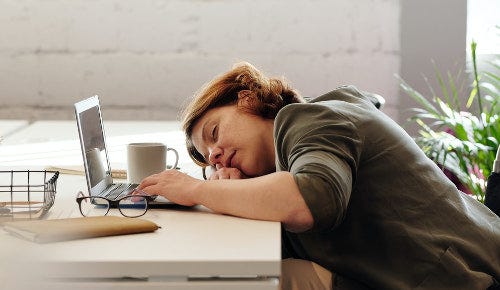The Real Cure for Eye Strain : More Experiences from People Around the World
This article lists experiences of other people with severe eye pain. This is a followup on my earlier article about the cure for eye strain (including the need to check with a capable ophthalmologist, since myopia and eye strain can have various other causes).
Note: Many people earn money via the number of claps they receive on their Medium posts. My Medium account has not, is not and will never be monetized.

1. Sanjeev’s experience
[Clicking the rectangle above, will take you to the website]
Sanjeev’s doctors were unable to figure out the cause of his eye pain. He theorizes that his problem arose from poor posture, and he developed a set of exercises to overcome the problem. Without knowing more about his condition and his lack of response to my communication, I’m not quite sure if his assumptions were accurate. I would assume he may have automatically reduced his computer use, which may have been the real reason for recovery.
2. Dmitriy’s experience
His experience seemed similar to mine, where he lost sleep and used the computer too much. The doctor had no clue about how to solve it (as he mentions in the end). He found my article useful. Hoping to hear from him once he gets cured.
3. Jack’s experience
Same problem. No doctor could help. Sadly, he suffered much longer than me. He mentions the strain began after he got a programming job, but he also believes that a neck injury may be another reason. I’d vouch for the excess hours of programming being the reason. The comments on his blog show a sad pattern of severe eye pain being faced by many…and inexperienced doctors sometimes thinking that the patient is lying.
4. Neil and Perry’s experience
These highlight other causes of excruciating eye pain and the danger of constantly using some kinds of eye drops. It also hints at severely affected nerves being a cause of the pain. What’s heart-wrenching here, is the same problem I’ve been through: dismissive doctors thinking that the patient is lying.
5. My experience
My experiments and process of getting cured led me to the commonsense solution of obtaining proper uninterrupted sleep for 8 hours, taking breaks by closing my eyes after 20 minutes of strenuous eye involvement and obtaining a well balanced diet of properly cooked food (proteins in particular). So far, this has been the only solution that worked. The fact that my eye power reduced a little, gave me more assurance of its efficacy.
Note to Employers
Some employers create an illusion by telling people that “the workload you take on is completely dependent on you”. Then they proceed to dole out work that ends up in a lot of overtime.
Dear employers, please make sure employees get the rest they need. Burnt out employees are only going to inadvertently reduce productivity and end up causing more errors. Every experienced manager knows that overworking people is not always going to guarantee project success. Rather than use tactics of nudging people to work longer, improve the way you plan timelines and buffers. No matter how urgent work is, let employees take periodic rest by allowing them to close their eyes or take a nap to rest. Shun overtime. There’s already decades of research on productivity, which shows that long working hours are neither helpful for the employee nor the organization.
We have a short life…a mere blink in the annals of time…on a planet that’s less than a speck of dust in the expanse of the universe.
The gift of normal vision
The number of people facing eye strain appears to be increasing. However, certain solutions/cures being provided to them and the constant pressure of school/college/work and digital-screens/sleep-loss/bad-food does not seem to allow them to heal. We need come together to do more to build a healthy planet with healthy people. The gift of normal vision is especially too precious to ruin. It’s sad that people are being prescribed spectacles and eye drops and are made to work longer instead of being advised and allowed to get rest and recover. How many people’s eyesight needs to be ruined to make a living?
All this being said, one shouldn’t rely solely on self-diagnosis. Periodic checks by a capable doctor is necessary. If the strain is being caused by some other reason, even if the doctor couldn’t figure out the problem immediately, the diagnostic procedures may help eventually figure it out. But no matter what the doctor prescribes, never forget to do the three fundamental things:
1. Eight hours of uninterrupted sleep every night.
2. Closing the eyes after 20 minutes of strenuous eye involvement (also relax the face & neck muscles), and waiting till the strain subsides.
3. Getting a well balanced diet of properly cooked food.
Any responsible, sensible, competent doctor will prescribe these three things too.
I’d love to hear your opinions and experiences in the comments. Also, please tell more people about the cure. Not enough doctors are telling eye strain patients to get proper rest and sleep.
